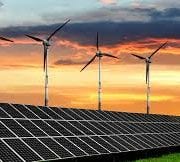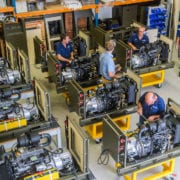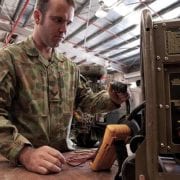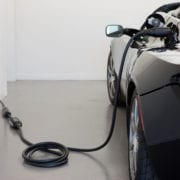Reliable mobile power – anywhere anytime
“Part of the design for the mobile Makinex Generator sets required sourcing the right light weight components which were robust, reliant and had the grunt when needed. RFL Alternators worked closely with Makinex to provide technical guidance and expertise and continues to be valuable partner to the business”, says Rory Kennard, Managing Director of Makinex.
Generator sets need to tackle head on the demands of dusty worksites, harsh environmental conditions, remote locations, restricted access and handle varying output requirements anywhere at any time. This is a tough ask and demand is growing as smart thinking tradespeople and contractors are being rewarded by utilising efficient processes and equipment, which save them both time and money.
Makinex is an industry leading expert in designing and developing innovative product solutions for the construction, landscaping, equipment hire, and infrastructure industries. Working closely with local and National businesses Makinex creates unique, innovative and practical product solutions that provide contractors and tradespeople with a better way to do their jobs to save time, physical effort and money.
The situation/challenge
A reliable power source to equipment and tools is daily critical and flexibility is needed to a wide range of applications; whether it be lighting, appliances, tools, air conditioners, welders or brick saws and a generator set needs to be demand ready. Even moving equipment on and off vehicles, OHS manual handling guidelines must be adhered to and weight becomes a major consideration when selecting the right generator set.
Makinex understood these challenges and set about designing a portable generator range which was lightweight, easy to move around, reliable and efficient to run. The current market had models which often encountered electronic failure and were not portable.
Part of the design required sourcing the right light weight components which were robust, reliant and had the grunt when needed. RFL Alternators specialises in and is well-known for its expertise in guiding and providing cost benefit ground-breaking alternator solutions, and subsequently Makinex and RLF Alternators teamed up.
The outcome/solution
RFL Alternators, a world class manufacturer of high quality permanent magnet RF2 AC 2 pole series alternators which features the powerful Magnetic Flux technology embedded in the permanent magnetic design. Rather than the traditional wound rotor with permanent magnet end, this new design allows the length of the rotor to reduce significantly. Consequently, the alternator is lighter in weight, has a 40% smaller footprint and 92% more efficient, providing Makinex the ideal component to be integrated into their new compact petrol and diesel 7 – 16 kVa generator set range.
Jason Clegg, Managing Director RFL says “the new permanent magnet alternators use strong rare earth Neodymium magnets, the most powerful commercial type of magnet available today, and with no electronics we see no failures. We will proudly continue to partner with Makinex to assist them in expanding their state-of-the-art portable generator range”.
The petrol driven 7kVa, 10kVA and 16kVA and 9kVa diesel Makinex generator set range was designed with high quality components such as a petrol or diesel engine, alternator and power outlets to make up the generators and are fixed within a heavy duty, but lightweight galvanized steel frame to enable the unit to easily be moved around. Featuring, single and 3 phase outlet capability; 15% more engine efficiency; along with the ability to provide either 240V single phase or 415V three phase power, as well as meeting industry safety standard regulations, you can feel confident your equipment will feel the power.
“The smart portable generator range is more versatile than ever, with the ability to join and synchronise generator sets to give more power when needed says Rory Kennard, Managing Director of Makinex. This is due to the high performing RFL alternator which uses an integrated basic phase matching control mechanism”.
The market now has a performance driven generator set solution, which is unsurpassed in both reliability and quality with capabilities to withstand harsh workplace environments.
Makinex Generator 10kVA set fitted with an RFL RF2-12.5 alternator- model powering two compressors simultaneously. The RFL Alternator uses ground-breaking Magnetic Flux technology and enables a powerful compact design.

Two Makinex Generator 10kVA sets operating in parallel to power a three phase concrete polisher. RFL Alternator incorporated in the design using ground-breaking Magnetic Flux technology.

Makinex Generator Set – Petrol driven 7kVa, 10kVA and 16kVA and 9kVa diesel range – RFL Alternator incorporated in design using ground-breaking Magnetic Flux technology.














